November is Native American Heritage Month. The month is a time to celebrate rich and diverse cultures, traditions, and histories and to acknowledge the important contributions of Native people. One of the ways to learn about Native American heritage in Pennsylvania is through archaeology.
If you are one of our regular readers, you’ll know that PA SHPO has started working on Pennsylvania’s next statewide historic preservation plan. Included in the statewide plan is an overview of the types of older and historic places found in Pennsylvania, including archaeological sites.
Since we’ll be looking at this section of the plan again early next year as part of statewide planning process, I thought it would be a good time to share with you this overview of archaeological resources in Pennsylvania. It is from the current statewide historic preservation plan, #PreservAtionHappensHere.
This overview only scratches the surface and is aptly titled “Highlights of Pennsylvania Archaeology.” It is intended to give readers a summary of important sites and periods in Native American and Pennsylvania history related to archaeology. I’m sharing two of the sections with you in this post: Pre-Contact Archaeology and Contact Period Archaeology.
Pre-Contact sites provide insight into the early settlement of North America, environmental adaptation, and Native American culture. Examination of Contact period sites has helped archaeologists to better understand what happened when European settlers started interacting with tribes such as the Susquehannock and Delaware.
I’d also like to hear from you, after you read this, about what more you’d like to know about the commonwealth’s archaeological resources and the Native American peoples who lived here.
Pre-Contact Archaeology
Archaeological research in Pennsylvania takes our understanding back to the earliest known human occupation in North America. Some Pennsylvania sites have even yielded evidence suggesting an earlier human presence than archaeologists had traditionally assumed.
During the Paleoindian period, 16,500 to 10,000 years ago, Native Americans lived in small, mobile bands that were well-adapted for hunting and foraging within the cold, glacial environment. The oldest site in Pennsylvania, Meadowcroft Rockshelter in Washington County, includes Paleoindian components dating to at least 16,000 years ago. Excavation of this complex site revealed intact cultural layers spanning thousands of years and yielded significant information about Paleoindian diet and technology. Because of its importance, Meadowcroft was recognized as a National Historic Landmark in 2005.
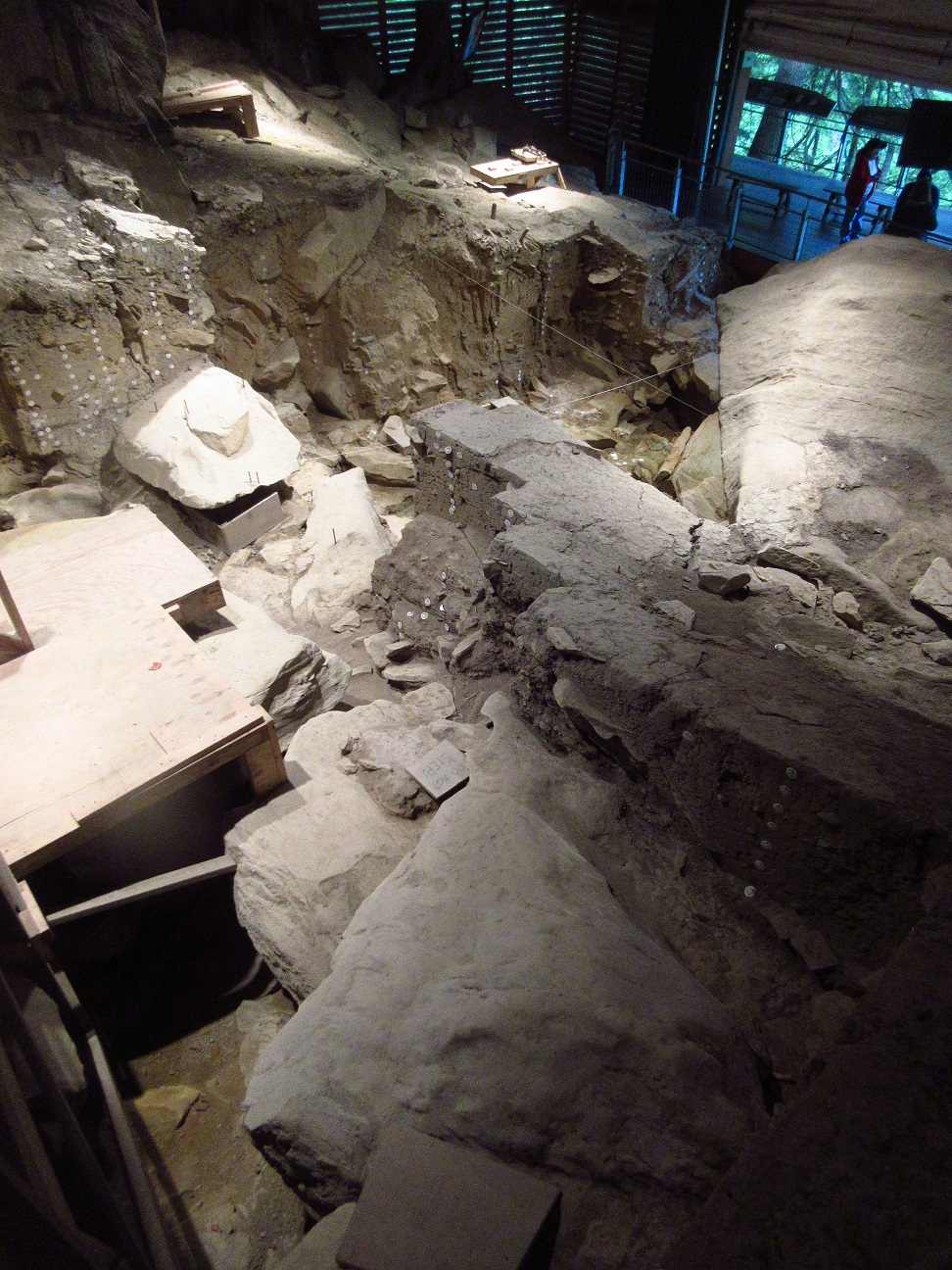
Meadowcroft Rock Shelter, Jefferson Township, Washington County.
Other significant Paleoindian sites include Shawnee-Minisink in Monroe County and Shoop in Dauphin County. Shawnee-Minisink is the second oldest site in Pennsylvania. Because it contained intact Paleoindian hearth features, the site changed our understanding of the spread of Clovis culture and yielded significant information about the Pleistocene environment and diet. A Pennsylvania Historical Marker was dedicated to Shawnee-Minisink in 2010.
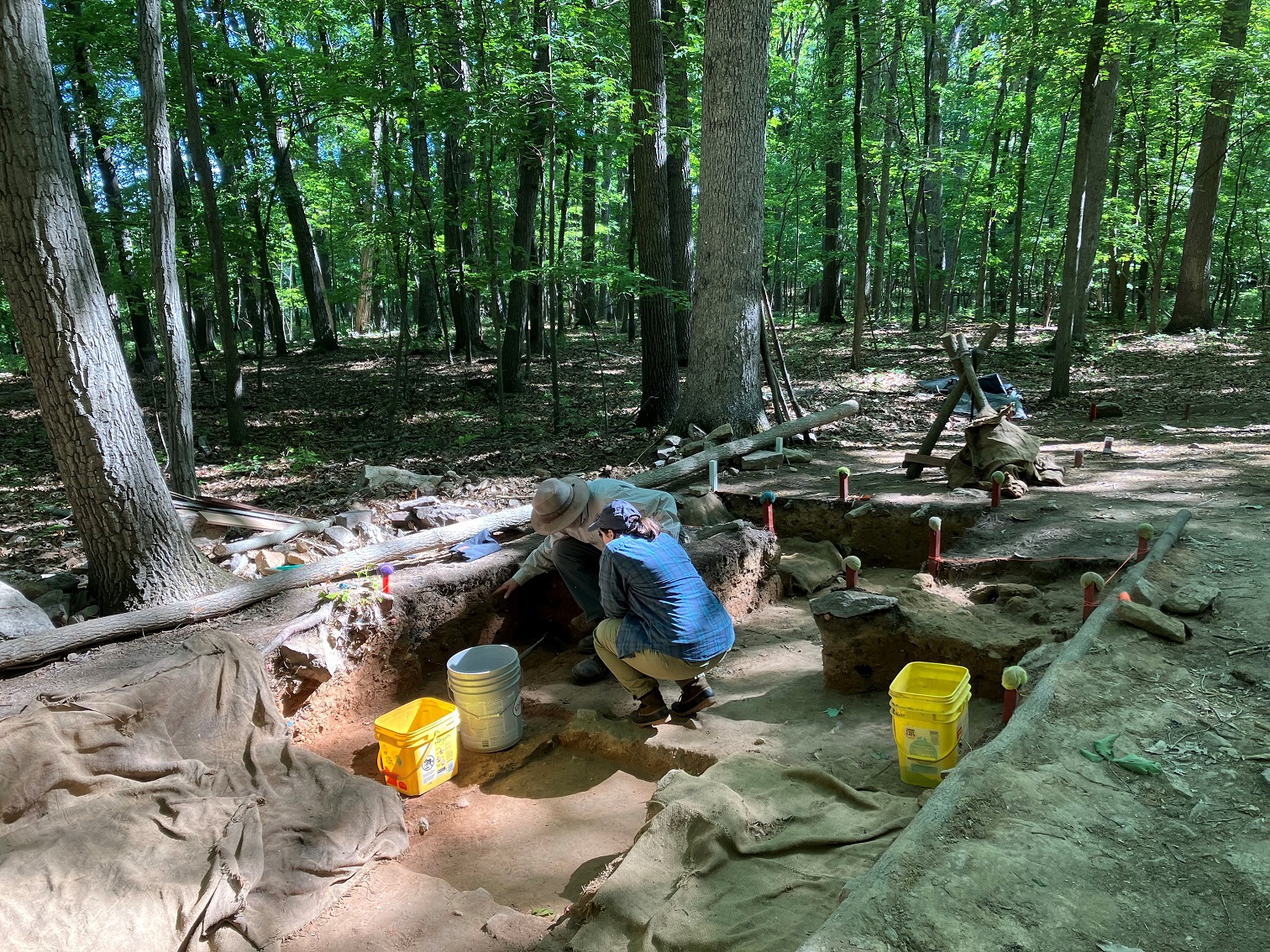
Rhiannon Flaig and Kurt Carr looking at the stratigraphy of a wall at the Shoop Site (36DA0020).The Archaic period in Pennsylvania spans from about 10,000 to 4,300 years ago. A warmer, drier climate dominated during this time. Excavations have revealed changes in stone tools, larger social groupings, and a diet that relied heavily on the plant-based foods available in the forests, swamps and grassland that developed after glacial retreat. The Lower Black Eddy site, located along the Delaware River in Bucks County, represents an Archaic base camp with easy access to the river and to tool stone sources like the nearby Point Pleasant argillite quarry. City Island in the Susquehanna River in Dauphin County was a seasonally occupied camp, with artifacts such as net sinkers showing the dietary importance of fishing. Although there are fewer stratified Archaic sites in the western part of Pennsylvania, significant finds have included Goddard in Mercer County and Kinsinger in Somerset County—both of which contained post features from houses.
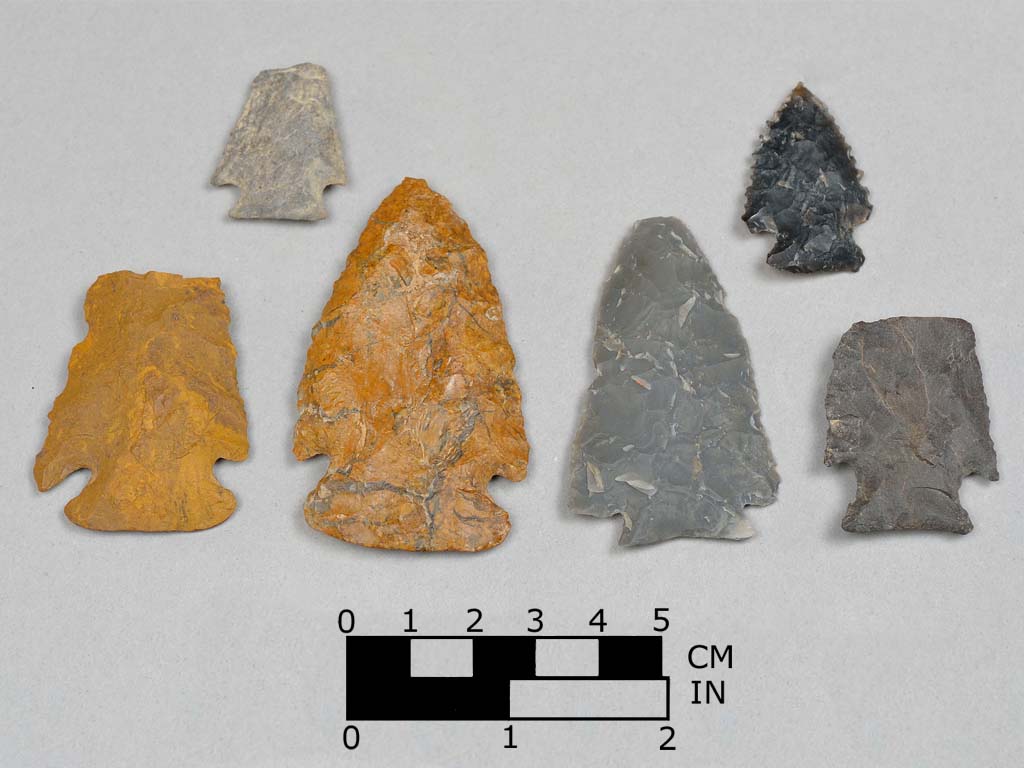
Early Archaic chipped stone spear points. Photo from http://www.phmc.state.pa.us/portal/communities/archaeology/native-american/archaic-period.html.
Following the Archaic period, increased population and environmental changes enabled gradual culture change in portions of Pennsylvania. The Transitional period, 4,300 to 2,700 years ago, saw increased trade and the use of steatite vessels for cooking food. Transitional components have been identified at stratified sites, such as City Island, Leetsdale in Allegheny County, and Piney Island in Lancaster County, with the greatest concentrations documented in the Susquehanna River basin.
If the Transitional period represented a gradual and regionalized shift from Archaic-period lifeways, the Woodland period (2,700 to 1,550 years ago) saw widespread adoption of new behaviors such as plant cultivation, consolidation into larger groups and villages, regional trade, and the use of pottery vessels.
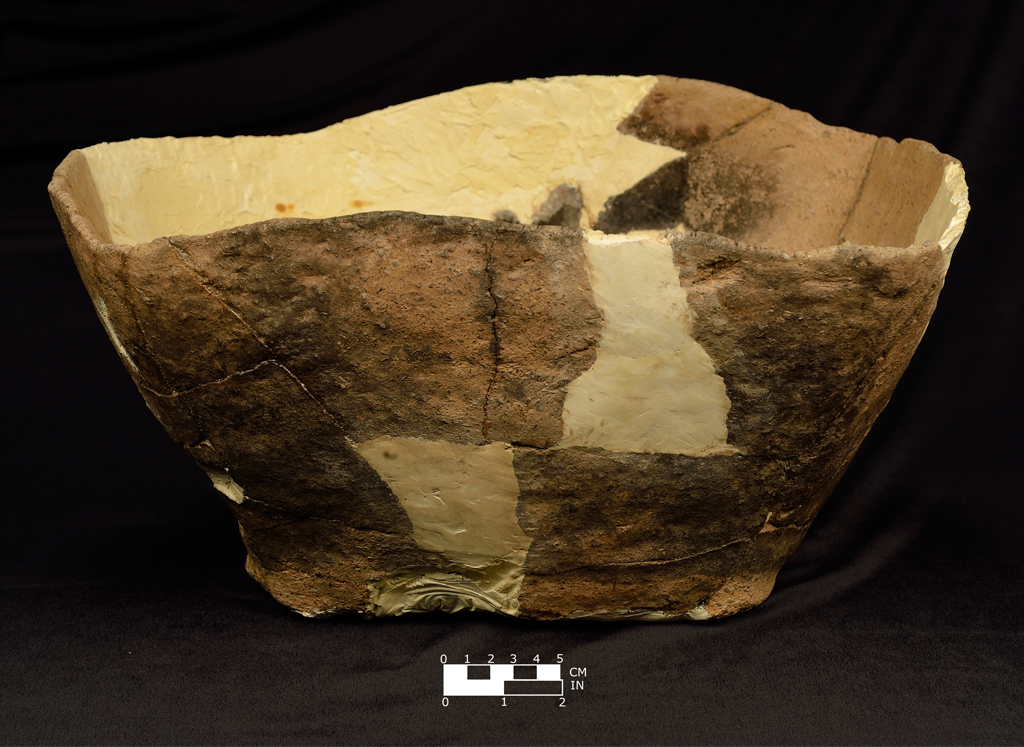
Early Woodland vessel from the Byram site (28HU39). Photo from http://www.phmc.state.pa.us/portal/communities/archaeology/native-american/early-middle-woodland-period.html.
Archaeologists also have identified individual cultural groups that lived in Pennsylvania, as well as regional connections with other cultures in North America. For example, the Pitt Gas burial mound in Greene County contains artifacts from the Meadowood phase that originated in New York and the Adena cultures in Ohio and Mississippi. Most burial mounds are found in the Ohio drainage, with fewer numbers in central Pennsylvania associated with the Late Woodland Clemson Island culture.
Another site type that emerged during the Woodland period is the village, which formed as people started living in larger, more sedentary groups. From these sites, archaeologists learn significant information about family and social organization, Pre-Contact architecture, food processing and storage, burial practices, and warfare. Examples include Monongahela villages, like Consol in Westmoreland County and Johnston in Indiana County, and Shenks Ferry villages, like Murry and Quaker Hills Quarry in Lancaster County.
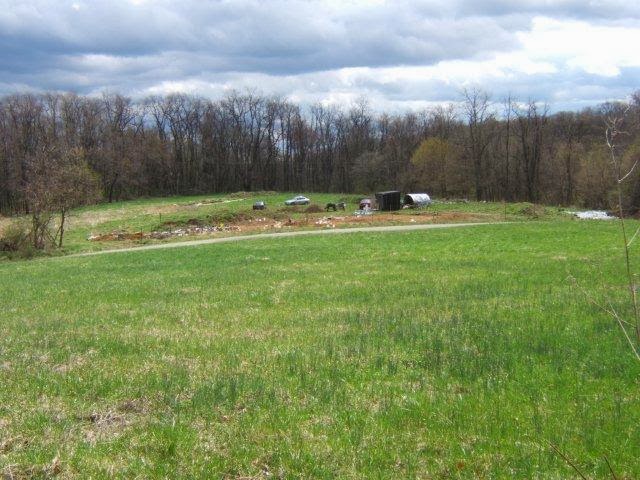
Overview of the Consol site (36WM100) located on the hilltop saddle looking east. Image from https://twipa.blogspot.com/2014/01/westmoreland-county.html.
Some Pre-Contact sites are hard to associate with specific cultures and periods, but they are highly important because they show us aspects of Native American life that are not usually seen in the archaeological record. Sheep Rock Shelter in Huntingdon County is one of the most unique sites ever excavated in Pennsylvania. Its historically dry conditions led to the remarkable preservation of artifacts that are rarely found—woven cordage, bark basketry, and decorated bone knife handles—illustrating a wider range of Native American lifeways than can be reconstructed from stone tools.
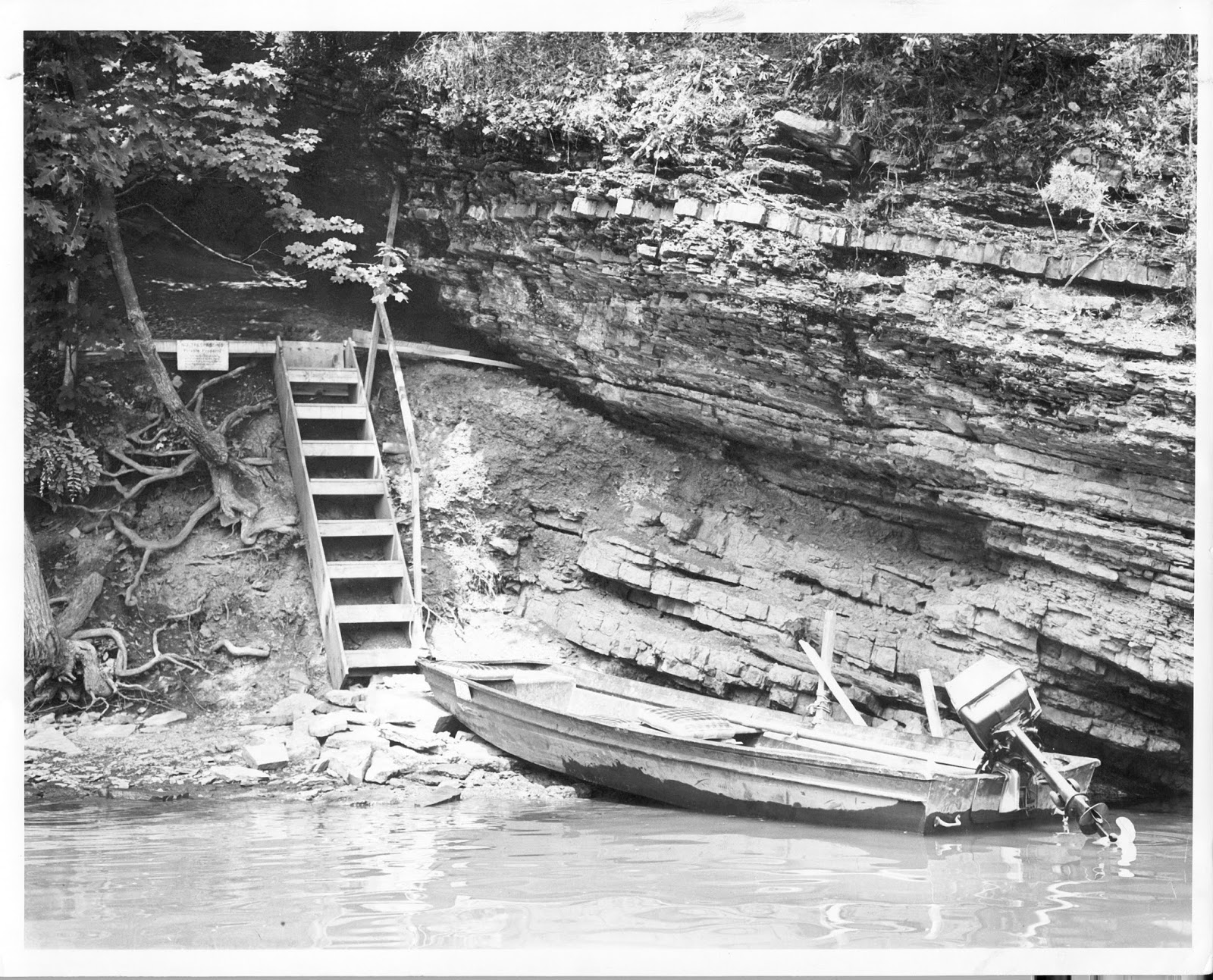
Entrance to the Sheep Rock Shelter area in Summer 1960. Image from https://twipa.blogspot.com/2015/07/excavations-at-sheep-rock-shelter-36hu1.html.
Although the site is now submerged under Raystown Lake, a small portion was modelled as an exhibit in The State Museum of Pennsylvania. Similarly, petroglyph sites allow us to look beyond technology and subsistence to examine the less-tangible aspects of culture, such as symbolism, ceremony and religion. Examples include Big and Little Indian Rock in the Susquehanna River, Lancaster County, and Indian God Rock in the Allegheny River, Venango County.
Contact Period Archaeology
Archaeology of the Contact period, spanning between 1550 and 1750, studies the interaction between Native groups and Europeans and the eventual demise or displacement of the Susquehannock and Delaware tribes that lived in southeastern and central Pennsylvania.
Tribal conflict, European trade, disease, and the occupation of Native lands by European settlers led to tremendous culture change. Through the excavation of Contact period Native American villages, such as the Susquehannock sites around Washington Boro in Lancaster County and Memorial Park in Cumberland County, archaeologists have traced the movements and cultural changes of the Susquehannock people during the 16th and 17th centuries.
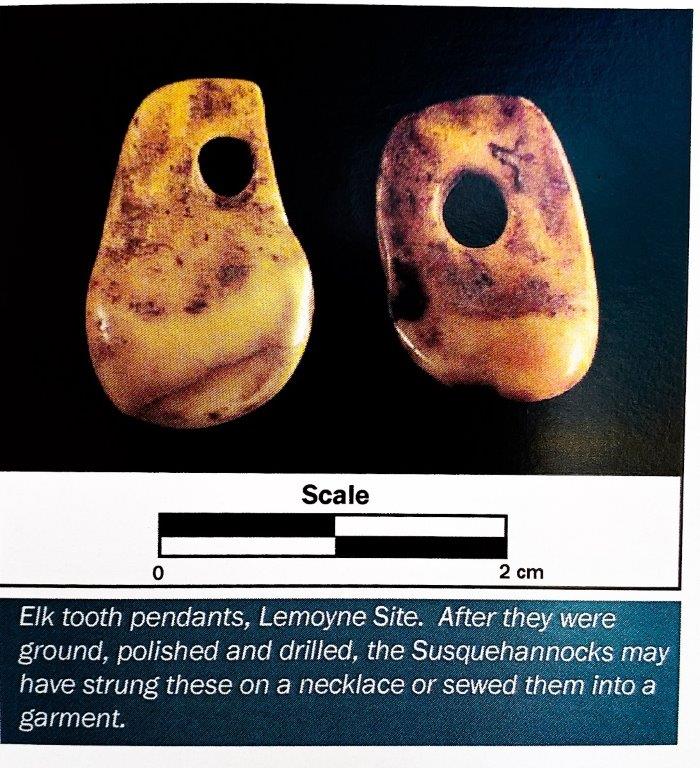
Elk tooth pendants from the Lemoyne site. Source: Wyatt, Andrew, Barbara J. Shaffer, and Brenda L. Weller. Before Lemoyne: A Susquehannock Village in Memorial Park, Lemoyne Borough, Pennsylvania. Harrisburg, PA: Norfolk Southern, 2013. Print.
Villages from the so-called Refugee period (18th century) provide insight into the last Native occupations. A handful of sites in Beaver and Lawrence counties show the westward movement of the Delaware. Conestoga Town in Lancaster County was the final settlement of the Susquehannocks before they were massacred in 1763.
Although the Contact period ends in the mid-18th century, additional sites tell the story of Pennsylvania’s continued interactions with Native groups through westward expansion, the French and Indian War, and the Revolutionary War. Examples include the Revolutionary War-era Queen Esther’s Town in Bradford County and the Cornplanter Grant in northwestern Pennsylvania, which was occupied by the Seneca until the construction of the Kinzua Dam in the 1960s.
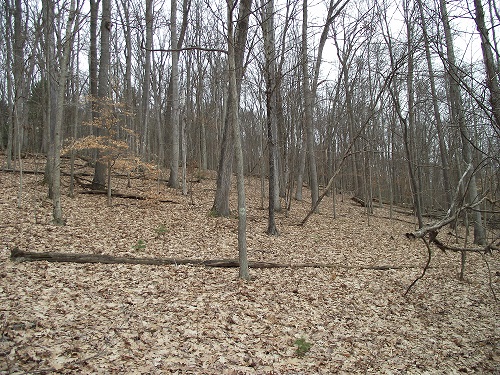
Current view of the southern end of the Cornplanter Grant today Image courtesy of Chris Espenshade, taken February 28, 2017.
Statewide Plan Update
What else would you like to learn about in the next statewide historic preservation plan related to archaeology?
Leave us a comment or, if you haven’t already, you can also share your valuable opinions and suggestions through our statewide historic preservation plan survey. The short survey should take about 10 minutes to complete and the results will be used to develop the next plan and inform the next step in the process, which is outreach and engagement with Pennsylvanians like you.
Comment Policy
PHMC welcomes and encourages topic-related comments on this blog. PHMC reserves the right to remove comments that in PHMC’s discretion do not follow participation guidelines.
Commenters and Comments shall be related to the blog post topic and respectful of others who use this site.
Commenters and Comments shall not: use language that is offensive, inflammatory or provocative (this includes, but is not limited to, using profanity, obscene, or vulgar comments); disparage other commenters or people; condone illegal activity; identify the location of known or suspected archeological sites; post personal information in comments such as addresses, phone numbers, e-mail addresses or other contact details, which may relate to you or other individuals; impersonate or falsely claim to represent a person or an organization; make any commercial endorsement or promotion of any product, service or publication.
If you would like to comment on other topics not related to this blog post but related to PHMC, please fill out the PHMC Contact Us Form.
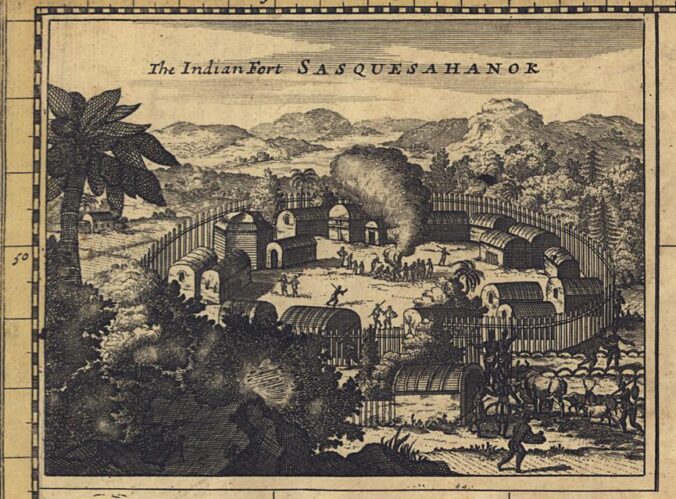
Very interesting article about Native American sites. Appreciated seeing mention of SHOOP site near Halifax, PA
Thanks for your publication. Very well written